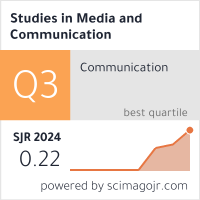Evaluation of the Performance and Efficiency of the Automated Linguistic Features for Author Identification in Short Text Messages Using Different Variable Selection Techniques
Abstract
The aim of this paper was to evaluate the efficiency of automated linguistic features to test its capacity or discriminating power as style markers for author identification in short text messages of the Facebook genre. The corpus used to evaluate the automated linguistics features was compiled from 221 Facebook texts (each text is about 2 to 3 lines/35-40 words) written in English, which were written in the same genre and topic and posted in the same year group, totaling 7530 words. To compose the dataset for linguistic features performance or evaluation, frequency values were collected from 16 linguistic feature types involving parts of speech, function words, word bigrams, character tri grams, average sentence length in terms of words, average sentence length in terms of characters, Yule’s K measure, Simpson’s D measure, average words length, FW/CW ratio, average characters, content specific key words, type/token ratio, total number of short words less than four characters, contractions, and total number of characters in words which were selected from five corpora, totalling 328 test features. The evaluation of the 16 linguistic feature types differ from those of other analyses because the study used different variable selection methods including feature type frequency, variance, term frequency/ inverse document frequency (TF.IDF), signal-noise ratio, and Poisson term distribution. The relationships between known and anonymous text messages were examined using hierarchical linear and non-hierarchical nonlinear clustering methods, taking into accounts the nonlinear patterns among the data. There were similarities between the anonymous text messages and the authors of the non-anonymous text messages in terms function word and parts of speech usages based on TF.IDF technique and the efficiency of function word usages (=60%) and the efficiency of parts of speech frequencies (=50%). There were no similarities between the anonymous text messages and the authors of the non-anonymous text messages in terms of the other features using feature type frequency and variance techniques in this test and the efficiency of these features in the corpus (< 40%). There was a positive effect on identification performance using parts of speech and function word frequency usages and applying TF.IDF technique as the length of text messages increased (N≥ 100). Through this way, the performance and efficiency of syntactic features and function word usages to identify anonymous authors or text messages is improved by increasing the length of the text messages using TF.IDF variable selection technique, but decreased as feature type frequency and variance techniques in the selection process apply.
Full Text:
PDFDOI: https://doi.org/10.11114/smc.v6i2.3892
Refbacks
- There are currently no refbacks.
Studies in Media and Communication ISSN 2325-8071 (Print) ISSN 2325-808X (Online)
Copyright © Redfame Publishing Inc.
To make sure that you can receive messages from us, please add the 'redfame.com' domain to your e-mail 'safe list'. If you do not receive e-mail in your 'inbox', check your 'bulk mail' or 'junk mail' folders.
If you have any questions, please contact: smc@redfame.com
------------------------------------------------------------------------------------------------------------------------------------------------------

